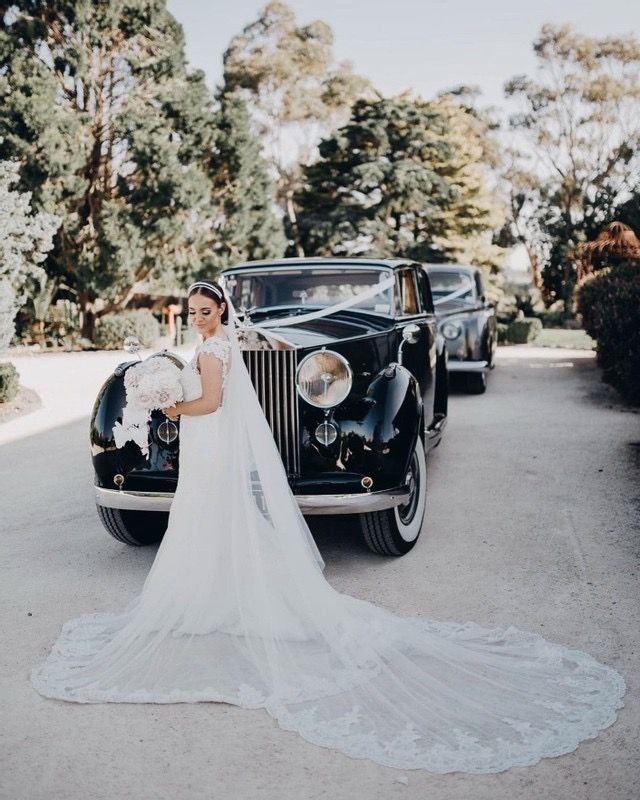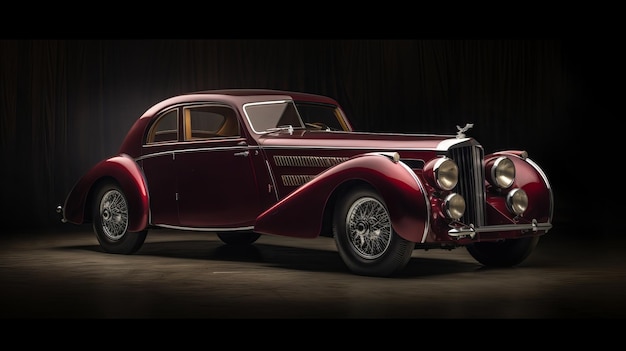

European classic car design embodies timeless elegance, shaping the automotive landscape for decades. From the sleek silhouettes of Italian sports cars to the robust engineering of German classics, these vehicles represent more than just transportation—they embody a distinct aesthetic and cultural heritage. This article delves into the defining features, the historical context, and the enduring appeal of these captivating automobiles, offering a comprehensive understanding of their timeless design language. We’ll explore the key elements that make these cars stand out, examining their influence on automotive design as a whole, and offering a glimpse into the historical context that shaped them. Let’s embark on a journey through the captivating world of European classic cars!
The Unwavering Allure of European Classic Design
Unveiling the Timeless Appeal of European Classics
European classic cars, more than simply machines, are often works of art. Their allure extends far beyond their mechanical prowess; it lies in their striking design elements, the unique stories they embody, and the enduring cultural impact they’ve had. The elegance of these cars transcends eras, captivating generations with their unique aesthetics. From the Art Deco influence on early designs to the sleek silhouettes of post-war models, each era reveals a distinct interpretation of style and innovation. Furthermore, the craftsmanship of these vehicles often surpasses that of modern counterparts, highlighting the meticulous attention to detail prevalent in the era of their creation.
The Role of Cultural Heritage in Shaping Design
Each European nation has its own unique automotive heritage that influences the design aesthetics of its cars. Italian cars often embody an exuberant and artistic style, mirroring the country’s passionate cultural identity. This flamboyance is evident in their curvaceous lines and dynamic proportions. German engineering, on the other hand, is characterized by precision, robustness, and a focus on performance, reflecting the country’s meticulous approach to craftsmanship. These national influences are integral to understanding the nuances and uniqueness of each design, contributing to the enduring charm of these vehicles.
The Impact of Historical Periods on Design
Shaping Aesthetics Throughout Time
Historical periods played a crucial role in shaping the aesthetics of European classic cars. The Art Deco era, with its geometric patterns and streamlined forms, significantly impacted the design language of the 1930s and 40s. This influence is visible in the streamlined bodies and bold contours of many models. Post-war designs, characterized by optimism and innovation, often feature more aerodynamic shapes and an emphasis on practicality. Such historical contexts illuminate the evolution of automotive design and how historical influences left their mark on these remarkable vehicles.
Examples of Design Influences and Historical Trends
The pre-war era saw a surge in European automobile design, characterized by the intricate use of chrome, elaborate detailing, and robust engine configurations. This period fostered a sense of opulence and prestige, exemplified by luxury models from manufacturers like Rolls-Royce and Bentley. The post-war boom led to a shift in focus towards more streamlined designs and an emphasis on performance. These vehicles often showcase sleek lines, advanced aerodynamic designs, and powerful engine configurations.
Key Design Elements that Define European Classics
Sleek Silhouettes and Distinctive Body Styles
One of the defining characteristics of European classic cars is their visually striking silhouettes. The sleek lines and curvaceous contours, often influenced by the prevailing artistic styles of the time, make them aesthetically captivating. Distinctive body styles, such as the coupe, roadster, and sedan, each reflect a specific era and style, contributing to the allure of these vehicles. The artistry of car design during these periods is evident in the carefully crafted forms and precise detailing.
The Evolution of Engine Design and Performance
Power and Refinement: A Timeless Combination
European classic cars are often associated with both performance and refinement, a harmonious combination that embodies their enduring appeal. Engine designs evolved alongside body styles and design philosophies; the pursuit of both power and refinement shaped the direction of classic car innovation. The meticulous attention to detail throughout the design process was paramount in achieving this balance. This is evident in their powerful yet refined engine designs and advanced engineering.
Specific Examples of Engine Innovations
German manufacturers were at the forefront of innovations in engine design, often prioritizing powerful and efficient engines for their cars. This dedication to robust engineering is evident in many classic cars of the era. Italian manufacturers emphasized elegance and performance, often developing advanced engines that married style and power. These are hallmarks of their distinctive automotive heritage.
The Enduring Appeal and Legacy of European Classics
Timeless Value and Cultural Significance
The enduring appeal of European classic cars extends beyond their visual allure. Their cultural significance stems from their connection to specific eras and events. They served as status symbols, representing wealth, prestige, and sophistication. These vehicles have become iconic symbols of automotive engineering and design artistry, embodying cultural pride and the aesthetic principles of various historical periods. Many classic cars are now prized as collectibles, a testament to their timeless appeal.
Impact on Modern Design
The design principles found in European classic cars continue to influence modern automotive design. The sleek silhouettes and attention to detail found in classic models are frequently incorporated into the design aesthetic of new vehicles. Classic cars continue to inspire a profound appreciation for both form and function in automotive design.
The Intricate Details and Craftsmanship
Meticulous Handwork and Precision
The meticulous craftsmanship of European classic cars is another key element that contributes to their lasting appeal. The attention to detail in every aspect, from the intricately designed interiors to the carefully polished exteriors, showcases the dedication to excellence during their production. The combination of refined aesthetics and superb craftsmanship, typical of the time, contributes to their status as collector’s items.
Examples of Exquisite Craftsmanship
The interiors of these cars, often featuring plush leather seats, elaborate wood inlays, and carefully crafted consoles, exemplify the dedication to intricate detailing. The exterior features, characterized by the precise alignment of panels and the meticulous application of paint, provide an aesthetic that is both refined and timeless.
Maintaining and Preserving European Classics
The Art of Restoration and Care
Preserving these timeless beauties requires dedication and expertise, highlighting the unique value of these vehicles. Restoring a classic car is more than just a mechanical repair; it’s an act of preservation, bringing a piece of history back to life and maintaining its beauty. The intricate and often unique designs make their maintenance and preservation a challenge that requires precision and a deep understanding of the technical details.
Specialized Techniques for Restoration
Specialized techniques and experienced professionals are essential when restoring classic cars. This meticulous process involves careful disassembly, component repair, and the exact reproduction of original parts. Access to specialized tools and knowledge of original factory specifications is critical to ensure a proper and accurate restoration process.
The Ongoing Legacy and Future of Classic Cars
The Passionate Community of Classic Car Enthusiasts
Classic cars have created a vibrant community of enthusiasts, spanning diverse interests and lifestyles. Sharing experiences and connecting over these remarkable vehicles fosters a passionate community. Events like car shows, rallies, and clubs provide venues for enthusiasts to showcase their vehicles, learn from experts, and connect with fellow enthusiasts. This community further highlights the ongoing appreciation for these timeless vehicles.
Classic Car Shows and Competitions
Classic car shows are an important aspect of this vibrant community, bringing together enthusiasts from around the globe. Competitions in these events often focus on aspects such as originality, condition, and overall aesthetic. Such events showcase the high standards required for preservation and appreciation of these vintage beauties. These events provide opportunities for showcasing these cars and provide a venue for community building.
The Impact of European Classic Cars on Design and Culture
Beyond the Automotive World
European classic car designs have permeated various areas, extending beyond the automotive world. Their sleek silhouettes and elegant design features are incorporated into modern architecture, product design, and even fashion. Their impact is an example of enduring and timeless design.
Artistic Inspiration and Cultural Relevance
European classic car design has influenced various fields such as art, photography, and literature, offering a rich tapestry of cultural influences. The designs inspire artistic interpretations, showcasing the cars as objects of aesthetic admiration and timeless significance.
Frequently Asked Questions
What are the key elements that define European classic car design?
European classic car design is characterized by a unique blend of form and function, often emphasizing elegance, craftsmanship, and a sense of understated luxury. Key elements include sleek silhouettes, distinctive body styles, meticulously crafted interiors, and powerful yet refined engine designs. This combination of elements appeals to both car enthusiasts and design aficionados alike, showcasing the enduring influence of European automotive artistry.
How have cultural influences shaped European classic car design?
European classic car design has been deeply influenced by the rich cultural heritage of the continent. The designs often reflect national identities, historical periods, and artistic movements prevalent during the design’s era. For example, Italian cars frequently showcase a dynamic and expressive aesthetic inspired by the country’s artistic traditions, while German cars are known for their engineering prowess and meticulous attention to detail. These cultural nuances contribute to the diverse and captivating character of each European classic car.
In conclusion, the timeless elegance of European classic car design stems from a meticulous blend of artistry, engineering, and cultural heritage. Understanding this design philosophy allows enthusiasts to appreciate the intricate details and historical context of these captivating vehicles. For a deeper dive into the world of classic cars, consider exploring museums, attending car shows, or joining a classic car club. This exploration not only enhances your appreciation for automotive design but also connects you with a vibrant community of passionate enthusiasts.